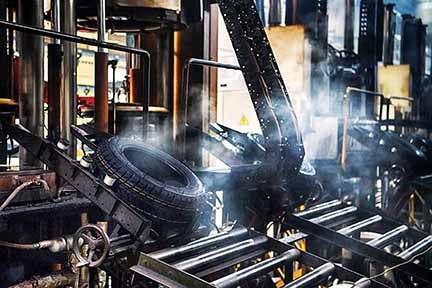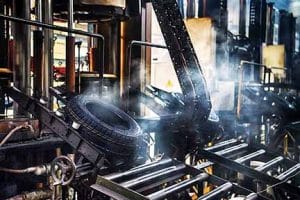The tyre industry has done well to keep the wheels of the nation rolling in a pandemic marred financial year. Ashish Bhatia gets the stakeholders to reflect on the changes, for good and bad, in an ongoing series of engaging conversations.
The Financial Year 2021 (FY2021) began by casting a shadow over the tyre industry’s growth prospects. Believed to be leading the march for India, manufacturing for the rest of the globe, tyre manufacturing was battered by the repeated blows of lockdown in Q1FY2021. The industry was left with no choice but to take the blows in the interest of preventing the transmission of Covid-19, and to support the government in its efforts for the larger good. As a result, in an unprecedented move, the tyre industry, known to be a continuous process industry, shut down tyre manufacturing plants across the nation.
According to KM Mammen, Chairman Automotive Tyre Manufacturers Association (ATMA), the industry complied with the need of the hour despite knowing that a sudden shut down of operations could deal a body blow to the work-in-progress and the raw material inventory. “Thankfully, when the lockdown was lifted,” averred Mammen, “the industry got down to business in the right earnest, braving all odds and disruptions. It goes to the credit of the industry that not only domestic demand was met squarely but sustained focus was also maintained on tyre exports.”
In hindsight, the tyre industry is claimed to have gone from strength to strength with each passing quarter of the fiscal. For instance, the economic stimulus and infrastructure boost, referred by Mammen, translated to a healthier Q3FY2021 for the industry when compared to the pre-pandemic fiscal. The exports were valued at Rs.6,000 crore in the first half (H1FY2021) of the ongoing fiscal year. Mammen especially credited the second quarter (Q2FY2021) performance for helping the export business stage a recovery. “Export performance in Q2FY2021 compensated for the sharp drop of 23 per cent in tyre exports experienced in Q1FY2021 bringing the overall decline down to seven per cent in the first half of the current fiscal,” he described.
Working in unison
Attributing the success in withstanding the tough times to the close association of the industry with its raw material partners, expressed Mammen, the credit goes to the formalised framework, set up a few years ago to bring the tyre industry and raw material partners on one single platform. It is believed to have led to the genesis of ‘ATMA Partners’ Summit’. “With significant sales coming from the Original Equipment Manufacturers (OEMs),” the tyre industry, he added, “worked closely with OEMs for ensuring a full-range availability.” Especially during the crucial festive season expected to turn the tide for the industry. Parag Satpute, Managing Director at Bridgestone India, echoed a similar sentiment. He said, “The pandemic spared no one as the entire automotive sector’s ecosystem was impacted.” “One of the reasons that the automotive sector came through this situation was that they were respectful to the limitations that all of us faced,”
he stated.
Supply shortage?
Shrugging off the concerns around tyre shortage, like the shortage of performance tyres reported for the aftermarket, Mammen attributed the alleged supply mismatch reported when the industry first began to unlock, to the large pent up demand. Categorising it as a short-term disruptive phenomenon, he lauded tyre manufacturers for largely succeeding in addressing the demand. Adding to it, Satpute expressed confidence in the void, if any, being filled soon enough as a result of the government approving the import of the particular category of tyres, known, not to be domestically manufactured. Bridgestone, as per Satpute, has accelerated the development program of performance tyres having a reasonable demand.
Inventory management and outlook
It is also true that the demand for tyres has turned volatile both from an OEM perspective as well as the aftermarket. Admitting to the volatility being tricky, Mammen called upon the stakeholders of the tyre industry, to pull off the “great balancing act”. “The industry is constrained by volatility at both ends of the spectrum – natural rubber (raw material) availability as well as the demand for tyres. So inventory management in the tyre industry calls for a higher order of inventory efficiencies and practices such as time to market,” he exclaimed. Of the opinion that the demand is buoyant rather than being volatile, Satpute blamed the buoyancy for the added stress on the inventory levels. “It’s a nice problem to have,” he quipped.
Satpute shifted focus to a bigger concern, in his opinion. “The bigger concern has been the shipping line crisis especially from the South East region which is our major source of raw material,” he revealed. Talking of Bridgestone, Satpute claimed, an agile approach has enabled the company to circumvent the challenge successfully. The industry on the whole, according to Mammen, is optimistic about the foreseeable future. “As the tyre industry’s fortunes are closely linked to economic growth, the outlook is positive in the near to medium term,” he commented. Concluded Satpute, the industry was moving towards normalcy and it was time to increase the supply. ACI











Leave a Reply